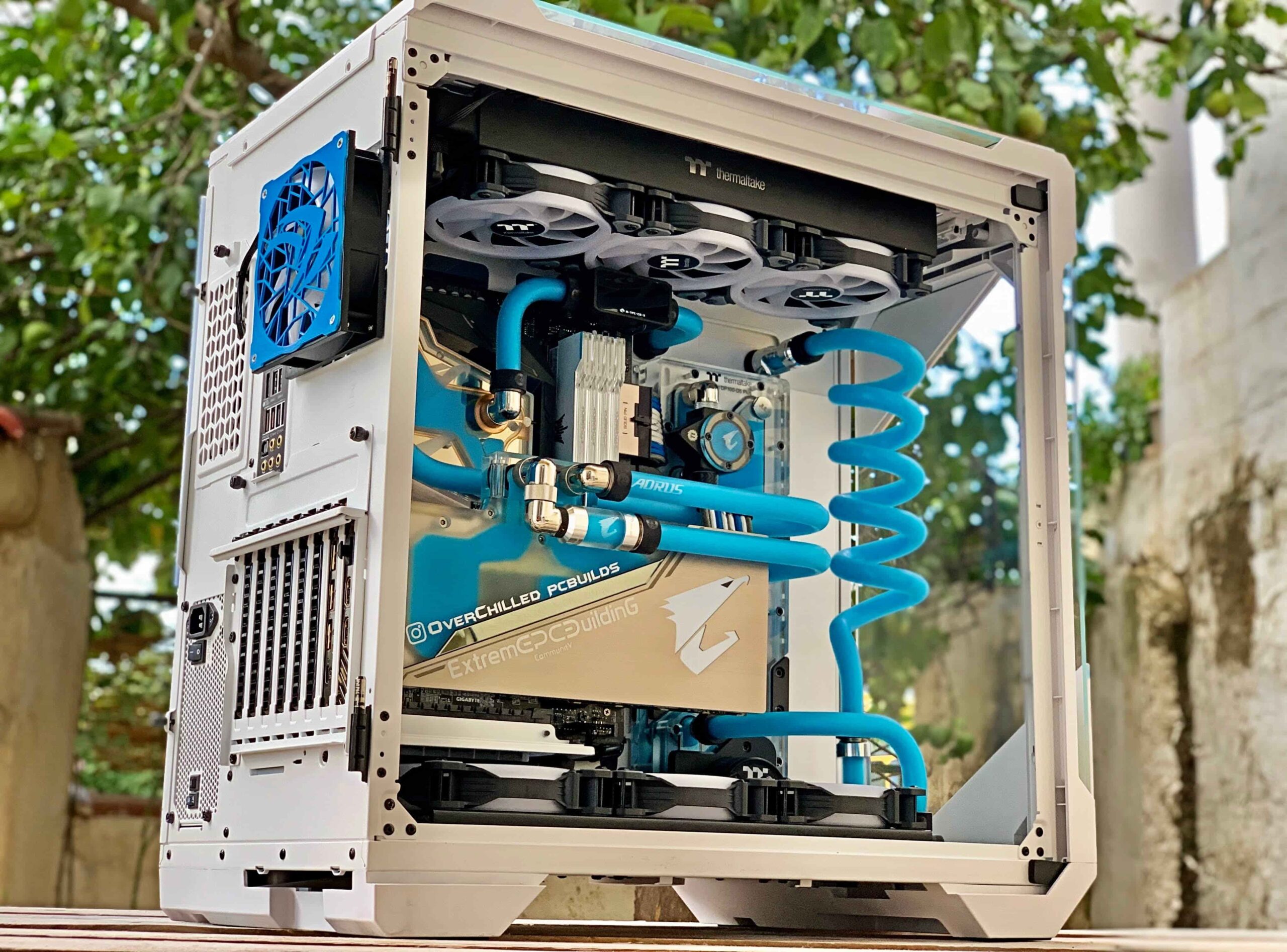The Importance of Cooling in Gaming Computers
In the realm of gaming computers, the importance of effective cooling cannot be overstated. As games become more graphically intensive and demanding, the hardware that powers these experiences generates significant heat. Without adequate cooling, components can overheat, leading to thermal throttling, reduced performance, and, in extreme cases, permanent damage. This article explores the various cooling technologies available, focusing on water cooling and air cooling, and discusses how they impact gaming performance.
Understanding Heat Generation in Gaming PCs
When a gaming computer runs its CPU, GPU, and other components generate heat as a byproduct of electrical resistance and workload. As these components operate at higher clock speeds and increased workloads—common in modern gaming—the heat produced can exceed safe operational limits. This is where cooling systems play a crucial role in maintaining optimal performance and prolonging component lifespan.
The Basics of Cooling Technologies
Cooling systems generally fall into two main categories: air cooling and water cooling. Each has its advantages and disadvantages, impacting performance, noise levels, cost, and complexity.
Air Cooling
Air cooling is the most common method employed in gaming PCs. It utilizes fans and heatsinks to dissipate heat away from critical components.

How It Works
- Heatsink: A metal block (usually aluminum or copper) attached to the CPU or GPU absorbs heat. The surface area of the heatsink allows for efficient heat dissipation.
- Fans: Fans move air over the heatsink, carrying away heat and allowing cooler air to flow in.
Advantages
- Cost-Effective: Air coolers are generally less expensive and easier to install than water cooling systems.
- Simplicity: With fewer components, air cooling systems are less prone to failure and require minimal maintenance.
- Reliability: Air coolers have no risk of leakage, which is a potential concern with liquid cooling systems.
Disadvantages
- Limited Cooling Efficiency: While modern air coolers can handle substantial heat, they may struggle under extreme overclocking conditions. For more insights, refer to Tom’s Hardware’s comparison of air and water cooling.
- Noise Levels: High-performance air coolers can generate noticeable noise, especially under heavy load.
Water Cooling
Water cooling, also known as liquid cooling, has gained popularity for its efficiency and effectiveness in dissipating heat from high-performance components.

How It Works
- Water Block: A water block is installed on the CPU or GPU, where it absorbs heat.
- Pump: A pump circulates the coolant (usually distilled water with additives) through the system.
- Radiator: The heated coolant travels to a radiator, where fans cool it before returning to the water block.
Advantages
- Superior Cooling Performance: Water cooling systems can handle higher heat loads, making them ideal for overclocking and high-performance gaming.
- Quieter Operation: Many water cooling solutions operate more quietly than air coolers, as larger radiators can dissipate heat with lower fan speeds.
- Aesthetic Appeal: Liquid cooling systems often feature customizable RGB lighting and sleek designs, appealing to gamers who value aesthetics.
Disadvantages
- Cost: Water cooling systems tend to be more expensive due to the additional components required.
- Complexity: Installation can be more complicated, requiring a greater understanding of the components involved.
- Risk of Leakage: Although rare with modern systems, leaks can occur and potentially damage components.
Comparing Performance: Air vs. Water Cooling
The performance of air and water cooling can be compared through several metrics, such as temperature control, thermal throttling, and overclocking potential.
- Temperature Control:
- Water cooling systems often provide better temperature control, especially under heavy loads. This is particularly beneficial for overclocked systems, where maintaining lower temperatures can enhance stability and performance.
- Thermal Throttling:
- Thermal throttling occurs when components reduce their performance to avoid overheating. Water cooling systems are generally more effective in preventing this issue, allowing for sustained high performance during gaming sessions.
- Overclocking Potential:
- Overclocking refers to running components at higher clock speeds than their rated specifications. Water cooling provides the headroom necessary for significant overclocking due to its superior heat dissipation capabilities.
Emerging Cooling Technologies
While air and water cooling dominate the market, other cooling technologies are emerging, further enhancing the capabilities of gaming PCs.
- Phase Change Cooling: This advanced technology works similarly to a refrigerator, using a compressor to vaporize refrigerant that absorbs heat. While highly effective, it’s generally reserved for extreme overclocking and is not practical for most users due to its complexity and cost.
- Thermoelectric Cooling: This method employs Peltier elements to create a heat differential, actively moving heat away from components. It’s less common in gaming PCs but offers intriguing possibilities for specialized setups.
Conclusion
In conclusion, the importance of cooling in gaming computers is paramount for ensuring optimal performance and longevity. While air cooling remains a popular and cost-effective choice, water cooling has carved out a niche for enthusiasts seeking the best performance and aesthetics. As gaming technology continues to evolve, so too will the cooling solutions available, allowing gamers to push their systems to new heights while keeping temperatures in check. Understanding the differences between these cooling methods can help users make informed decisions, ultimately enhancing their gaming experience.








